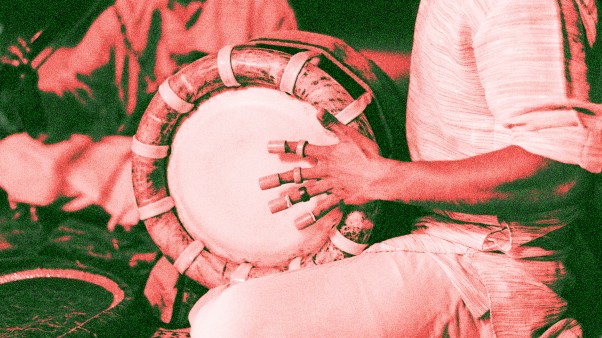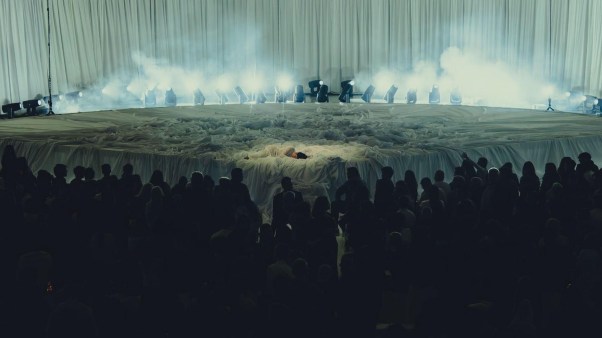[Correction: This article has been amended to better reflect the religious beliefs and scholarly arguments of Tomer Persico, the author of In God’s Image.]
Few ideas have changed the world as profoundly as the doctrine that all human beings who have ever lived bear God’s likeness. In Genesis 1:27, when God creates the first people, we learn that he painstakingly created them “in his own image.” Of all living beings, only men and women bear the very image of their Creator.
From the earliest days, this idea had profound implications, especially when compared with how other ancient civilizations viewed human beings. Put simply, the ancient world saw all people in stratified terms. Depending on a complex set of factors (always subject to change), some people were more valuable than others, more important than others, more powerful than others.
As documentary evidence attests, often in harrowing fashion, some people could be killed without their deaths being avenged or the murderers prosecuted. This pattern occurred during periods of war, but it could also prevail in peacetime, when the law deemed some people unworthy of its concern. Such was, in particular, the plight of widows, who had no one to pursue justice on their behalf.
In the Roman Empire, to use one example, this stratification was an obvious fact of life, an essential aspect of Roman social relations. Aristocratic, freeborn male Roman citizens were at the top of the social pyramid, with the emperor, of course, above all others. Women were seen as inferior to men, although freeborn (and especially imperial) women had some perks. (They could even own property, if they had at least three children.) Still, the earliest Roman legal codes noted women’s “levity of mind,” strongly implying a need for male guardianship at all stages of life.
And then there were the freeborn or freed urban poor. They were free in theory, but in a society that had no social safety nets, their lives were often short and unhealthy. At the bottom of the pyramid were the enslaved. Brutally conquered in Rome’s wars and sold at the empire’s many markets, they did not even legally own their own bodies.
All this is well-known and documented by historians, ancient and modern. So what difference did Christianity make in this world, and why? These questions bring us back to the doctrine of the imago Dei, which made Christianity the great equalizer—a faith that treasured all people unconditionally. The New Testament Gospels and Epistles routinely note the equality of all believers before God. Christ repeatedly interacts with people dismissed as utter outcasts by Jews and Romans alike.
The first believers strove to live the principle of the imago Dei. Early chapters in the Book of Acts give a striking depiction of communal life in the Jerusalem church, where commitments to sharing everything in common stood out as contrary to Roman norms. Similarly, the early martyrs Perpetua and Felicity, a noblewoman and her slave, defied Roman class distinctions by enduring imprisonment for their faith together, under the same conditions. Kyle Harper, a historian of the ancient world, has noted the revolutionary expectation in early Christianity that men and women would be held to the same standards of sexual purity.
The imago Dei’s influence did not stop in antiquity. Over two millennia, it has shaped the moral and ethical principles taken for granted in much of the Western world, as historian Tom Holland contends in his book Dominion. (In this essay and in my own recent book, I show how Christian beliefs about human dignity taught us to hate genocide.) Old Testament theologian Carmen Joy Imes has now authored three books on the revolutionary nature of the doctrine of God’s image for understanding the Old Testament and the church today.
And yet secularism uncomfortably coexists with religion in the modern world. The “Great Dechurching” is proceeding apace in America. Meanwhile, in most European countries, less than 10 percent of the population attends church services on any given Sunday. In Israel, where I spent part of my childhood, none of my classmates or friends regularly went to the synagogue, and public attitudes toward religion remain ambivalent.
Even in a secularizing landscape, the modern discipline of history has proudly claimed to model itself after the hard sciences, with their ideals of objectivity. Yet scholars bring moral and cultural assumptions to their research, which inevitably influence both the questions they ask and the answers they find. (One University of Chicago historian described the quest for objectivity as a “noble dream.”)
Religion scholar Tomer Persico arguably lets assumptions get the better of him in his latest book, In God’s Image: How Western Civilization Was Shaped by a Revolutionary Idea. The book revolves around Persico’s conviction that Christian beliefs about individual human dignity have bent the course of history toward secularism. Some of his claims could be construed as positing the superiority of secularism to religion. Early on, Persico writes, “Secularism does not simply entail the dwindling power of organized religion, but new perceptions of liberty and ethics. Democracy is not only a more or less efficient system of governance, but an expression of a new understanding about the value and significance of human life and about the source of legitimate authority.”
What exactly does Persico claim in this book? The chapters are remarkably disconnected, cherry-picking evidence and arguments without a clear rationale. If he gestures toward any clear thesis, it might be described like this: Modernity has been inimical to belief in God, and one driver of this secularization is the very individualism entailed in the conviction that each person bears God’s image.
Early chapters contrast ancient ideas about liberty with Christian alternatives, charting a shift toward people thinking of themselves as individuals rather than members of families and communities. Subsequent chapters discuss the religious wars that threw Europe into turmoil after the Reformation, as well as the political philosophy of John Locke, who theorized about maintaining civic peace in societies where people disagree about theology. As Persico sees it, the rise of religious diversity in Western societies opened the door for secularization to occur.
In chapter 5, “Meaning,” Persico reaches his underlying goal: depicting modern secularism as an outgrowth of Christian ideas about God’s image in humanity. The story of humanity rejecting religion, he concludes, is “the culmination of a millennia-long process of development, which began with the idea that all human beings were created in the image of God.” Does the arc of the universe really bend toward atheism as an essential companion to modern liberalism?
For Persico, belief in the imago Dei helped lay the groundwork for an “individualistic, liberal, and secular” culture that would evolve beyond it. As he elaborates,
By the nineteenth century, the concept of human dignity was no longer embedded in the image of God but instead negated it in the name of a secular conception of humanity. We thus explore atheism as an ethos and analyze secularization not as a process caused by the scientific revolution or driven by technological progress, but as a moral imperative. Religion was rejected in the name of personal autonomy and a wish to become fully human.
Persico’s use of the passive voice obscures agency. By whom was religion “rejected in the name of personal autonomy”? Whose “wish to become fully human” involves this outright and dramatic rejection of belief in God? Persico seems to assume that these statements describe the outlook of every rational person.
Persico is Israeli, and it’s possible the secular dynamics of life in Israel have profoundly influenced his assumptions. He has trouble imagining a state where commitments to God and democracy productively coexist. In fact, some statements in the book appear to dismiss the idea that contemporary Christian believers would regard the development of democratic ideals as anything but lamentable.
Consider, for instance, this aside at the end of his introduction:
Adherents of such belief systems would answer “no” to the question with which this book began—whether anything truly significant has happened over the past few centuries. For them, history is but a record of the suffering and upheavals between creation and redemption; the mighty shifts that humanity underwent with the dawn of the modern era are merely additional hurdles that the Lord of History has thrown in the way of true believers, who must grit their teeth and plow ahead without accepting change.
I suppose this means Persico wouldn’t be convinced by books like Sarah Irving-Stonebraker’s recent Priests of History: Stewarding the Past in an Ahistoric Age, which regards historical knowledge as an aid to strengthen faith rather than a “hurdle” to overcome.
All of this makes In God’s Image an incredibly frustrating read. Leaving aside the poor writing and argumentation—clunky and overly long sentences, illogically organized chapters, selective use of material—Persico shows little awareness that any intellectually serious person might take Christianity seriously, apart from any philosophical support it might lend to the rise of secular societies. Instead, he peppers the book with insinuations about the inevitability of human progress away from belief.
Ultimately, this book counts as a cautionary reminder about the assumptions some scholars bring to discussions of belief. Since the days of Herodotus, good historical writing has required an openness to be led by evidence—and a willingness to be proven wrong. Intellectual honesty demands no less.
Nadya Williams is the author of Cultural Christians in the Early Church and Mothers, Children, and the Body Politic: Ancient Christianity and the Recovery of Human Dignity.

















